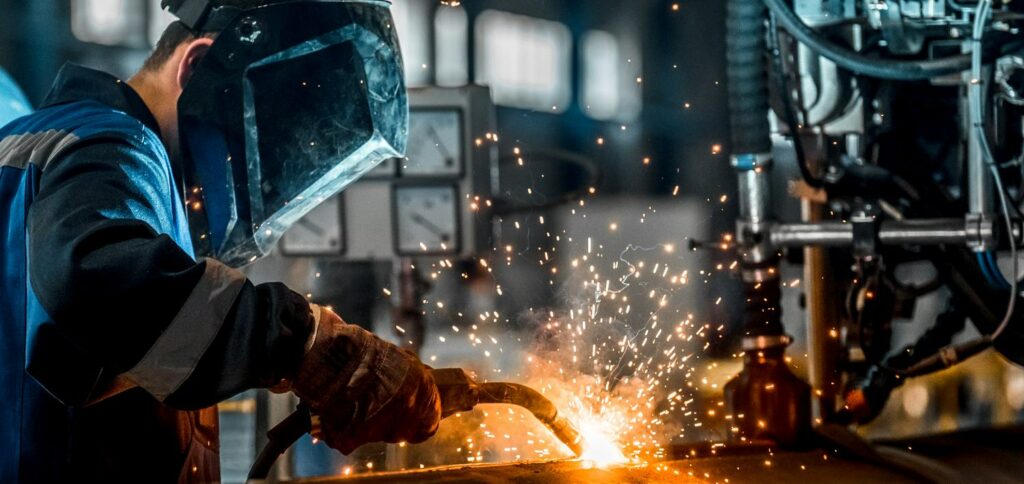
How to Make Safety Culture More Inclusive
Keeping safety relevant, compliant, and engaging can be tough. Some people feel patronized by safety lessons and legacy approaches to safety. The key is to empathize and acknowledge people think about their safety daily. Even though they don’t show it. The Issue normally lies in awareness and relevance. People will listen to others who have done their job long before they follow a sign or course. But both are crucial. So today we’d like to discuss the many professional approaches that can create an enterprise safety culture. These techniques won’t work on everyone, but all of them employed simultaneously will leave no one excluded. Just like learning, there’s no one sure way to spread safety awareness.
Explore this Article:
- How to Encourage Participation in Safety Culture
- The Benefits of Creating an Inclusive Safety Culture
How to Promote Safety Culture for Everyone
Safety culture isn’t just a buzzword. A safety culture’s end goal is to create an environment that is safely conditioned. This means safety culture should influence every decision. With an inclusive safety system, team members are inclined to not only think safely but share the message with others.
Creating such an environment takes great skill and discipline. Timing, patience, and knowledge are all factors in the quest for an inclusive culture that can penetrate even the most stubborn minds.
That’s why we’ve laid out these professional approaches in the manner they should be employed. The first is the foundation of your safety program, and the last is equally important yet should come later in the process.
Regardless of when you implement these protocols, they should all be planned for before being laid out. Look at your safety program as a whole system before you begin. That way the techniques can harmonize and complement each other. Incorporating all these from the beginning is proven to have lasting benefits and influence.
1) Start With Relatable Content
Companies have had remarkable success with their experienced personnel sharing relatable stories with the trainees before the introduction of training videos. This creates the conditions for motivated learning. Employees have a reason to value the training course they are about to see if they learn about near-misses with the equipment they will use daily.
And for some people, using instances from real life aids their understanding. Toolbox talks are a terrific method to review training material and keep it relevant to the experiences that professionals have on a daily basis.
With toolbox talks, seasoned staff can use props and point out pinch points and other hazardous spots on machines.
2) Carefully Choose Safety Courses
There are many safety courses to choose from nowadays. Carefully vetting the course can go a long way especially if you know it will be used for many hires. Courses that are too corny, or to laments can patronize team members into disagreeing with the content. Choose courses that deliver the content in a respectful manner.
Courses with visual aids instead of just people speaking also promote inclusive learning. Remember, much of this content is stuff the specialist or operators have already considered, so if it can be presented in a new way, then it is all the more valuable. Courses that help with inclusion often include:
- 3D animation with clear diagrams and inner workings
- Interactive quizzes
- video of the device in multiple scenarios
3) Encourage Incident Reporting
Giving workers a voice is a good way to make them feel appreciated, and this is crucial when it comes to safety. Employees should have a clear procedure for reporting injuries, near-misses, or any other violations of safety procedures.
But these reports shouldn’t just disappear into the administrative abyss; they should also be shared with the staff so they know what is being done to resolve their concerns. It is recommended that reports be made anonymously if requested, to ensure that employees make the reports regardless of consequences.

4) Hazard Reporting
Like incident reporting, hazard reporting should be anonymous. Employees can see problems before they become costly incidents. Dull blades, malfunctioning machinery, or worn hoses can all lead to massive incidents. Providing a method from which these problems can be documented quickly and organized into metadata can give leaders a timely perspective.
Furthermore, leaders can even be left out of the loop and maintenance can just handle the issues as they come. Large enterprises frequently use asset/equipment management software to organize the data to manageable levels. This allows them to see if the maintenance is being provided and they can quickly flag or decommission and replace something that is an issue or slowing production.
5) Establish a Safety Incentive Program
As you might expect, a safety incentive program is just another tool that gives team members more reasons to contribute to the overall safety of a company. Examples of this in action include giving employees “safety bucks” for reporting safety hazards that can be used to claim prizes.
6) Prove Consistency
Making a strategy to increase workplace safety, implementing it with fanfare, and then anticipating things to operate automatically is a fairly typical error. On paper, that could look feasible, but it disregards the significance of ongoing employee involvement. It’s crucial to show that regular efforts are being made to keep on track if an enterprise wants to ensure its employees that their safety is truly valued. This can entail making more investments in safety-related equipment, adding new training programmes, or changing strategy based on toolbox conversations. A corporation must show consistent dedication to workplace safety if it wants employees to take part in creating a strong safety culture.
The Benefits of Creating an Inclusive Safety Culture
Creating an inclusive safety culture is tough, and results might not show up right away.
Nevertheless, a strong safety culture must be inclusive for it to self-promote itself. Once most employees are onboard with safety, you’ll notice accidents decrease and proper procedures are respected. This produces better production and even greater cohesion.
When it comes to increasing employee safety, the advantages always outweigh the drawbacks, regardless of the industry. And an inclusive safety culture can self-govern itself much better than legacy safety policies. Healthy safety cultures promote the right way, the first time, and they mitigate bad habits from becoming commonplace.


























